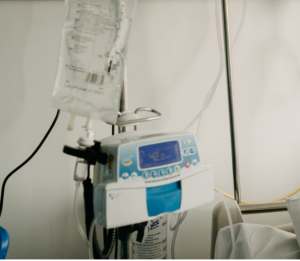Understanding Asthma
Asthma is a chronic respiratory condition characterized by episodes of reversible airway obstruction, bronchospasm, and inflammation[^1^]. These episodes, known as asthma attacks or exacerbations, can range from mild to life-threatening and require prompt and effective medical intervention[^2^]. Asthma often involves hyperresponsiveness of the airways, which can be triggered by various factors, including allergens, respiratory infections, exercise, and environmental pollutants[^3^].
The hallmark of asthma is the narrowing of the bronchial tubes, which are responsible for carrying air in and out of the lungs. This narrowing results in difficulty breathing, especially during exhalation, as the airways become constricted and inflamed[^4^].
How Asthma Affects the Patient
To fully understand the impact of asthma on patients, it’s crucial to grasp the normal mechanics of breathing. Breathing is a two-phase process: inhalation (inspiration) and exhalation (expiration)[^5^].
- Inhalation is an active process where the diaphragm and intercostal muscles contract, creating a negative pressure within the chest cavity that draws air into the lungs[^5^].
- Exhalation is typically a passive process, where the diaphragm and intercostal muscles relax, allowing the elastic recoil of the lungs to expel air without any active muscle contraction[^5^].
In patients with asthma, the process of exhalation becomes significantly impaired. During an asthma attack, the airways are narrowed due to bronchoconstriction, inflammation, and the presence of excess mucus[^1^]. This narrowing makes it difficult for air to flow out of the lungs. As a result, patients experience air trapping, where air becomes “trapped” in the lungs and cannot be fully expelled[^3^].
This air trapping leads to hyperinflation of the lungs, which makes the chest feel tight and causes the patient to struggle with exhalation[^5^]. The difficulty in getting air out of the lungs leads to prolonged expiration, increased work of breathing, and the characteristic wheezing sound heard during auscultation[^1^]. Over time, this can lead to fatigue of the respiratory muscles, further worsening the patient’s ability to breathe effectively[^4^].
Patients often describe this sensation as a feeling of suffocation or drowning. They may become anxious and panicked, which exacerbates their symptoms[^3^]. In severe cases, the patient may develop respiratory failure, which can be categorized as either Type 1 or Type 2:
- Type 1 Respiratory Failure: This occurs when the patient experiences hypoxemia (low oxygen levels in the blood) without hypercapnia (elevated carbon dioxide levels). In asthma, this is usually due to ventilation-perfusion mismatch where areas of the lung are well ventilated but poorly perfused, or vice versa[^6^].
- Type 2 Respiratory Failure: This occurs when the patient experiences both hypoxemia and hypercapnia. In asthma, this typically results from severe airway obstruction and air trapping, leading to an inability to expel carbon dioxide effectively. Over time, the increased work of breathing and respiratory muscle fatigue contribute to the accumulation of carbon dioxide in the blood, leading to hypercapnia[^6^].
Type 2 respiratory failure in asthma is particularly concerning as it indicates a significant progression towards respiratory collapse and requires immediate and aggressive intervention[^6^].
Signs and Symptoms of Asthma
Common signs and symptoms observed in asthma patients include:
- Shortness of Breath: Patients may have difficulty inhaling, but exhalation is even more challenging, leading to air trapping and a sensation of tightness in the chest[^1^].
- Wheezing: A high-pitched, whistling sound, particularly noticeable during exhalation, is a hallmark sign of airway narrowing[^4^].
- Coughing: Often worse at night or early in the morning, the cough is typically non-productive but can become persistent[^1^].
- Chest Tightness: The patient often experiences a sensation of pressure or constriction in the chest, which is associated with the hyperinflation of the lungs[^2^].
In severe cases, patients may display signs of impending respiratory failure, including:
- Use of Accessory Muscles: The patient may use neck and chest muscles to assist with breathing due to the increased work of breathing[^5^].
- Cyanosis: A bluish discoloration of the lips or skin indicates hypoxemia (low oxygen levels in the blood)[^4^].
- Inability to Speak: The patient may only be able to speak in single words or short phrases due to breathlessness[^3^].
Pre-Hospital Management of Asthma
As paramedics, our objective in the pre-hospital setting is to stabilize the patient, relieve their symptoms, and prevent further deterioration. This involves a quick assessment, prompt intervention, and continuous monitoring throughout care.
- Assessment:
- Primary Survey: Evaluate the patient’s airway, breathing, and circulation. Ensure the airway is clear and assess for any signs of respiratory distress[^2^].
- History Taking: Obtain a detailed history, including the patient’s asthma history, triggers, current medications, any episodes of asthma which required advanced airways intervention and the time of onset and severity of symptoms[^3^].
- Vital Signs: Monitor respiratory rate, oxygen saturation, heart rate, and blood pressure. In severe cases, capnography can be useful in assessing the effectiveness of ventilation[^1^].
- Oxygen Therapy:
- Administer high-flow oxygen via a non-rebreather mask to maintain SpO2 levels above 94%. Oxygen therapy is essential in managing hypoxemia during an asthma attack[^3^].
- Medication Administration:
- Short-Acting Beta-Agonists (SABAs): The first line of treatment is typically inhaled bronchodilators such as Albuterol (Salbutamol). This medication relaxes the smooth muscles surrounding the airways, leading to bronchodilation and improved airflow. It is commonly delivered via a metered-dose inhaler (MDI) with a spacer or a nebulizer[^7^].
- Anticholinergics: Ipratropium Bromide may be added to the treatment regimen. It complements beta-agonists by further reducing bronchoconstriction and mucus production[^8^].
- Corticosteroids: Prednisolone or Methylprednisolone can be administered to reduce airway inflammation. Although their effects are not immediate, they help prevent the progression of the attack and reduce the risk of recurrent exacerbations[^3^].
- Epinephrine: In cases of severe, life-threatening asthma (status asthmaticus), intramuscular Epinephrine may be administered. It acts as a powerful bronchodilator and vasoconstrictor, helping to open the airways and support blood pressure[^9^].
- Monitoring and Transport:
- Continuously monitor the patient’s response to treatment. Look for signs of improvement, such as reduced wheezing, easier breathing, and improved oxygen saturation[^2^].
- If the patient does not respond to initial treatments or if their condition worsens, prepare for rapid transport to the nearest emergency facility. Consider advanced airway management if necessary, and notify the receiving facility of the patient’s condition to ensure continuity of care[^1^].
Medications Used in Asthma Management
- Albuterol (Salbutamol): A SABA that provides quick relief by relaxing bronchial smooth muscles. It is the most commonly used rescue medication during an asthma attack[^7^].
- Ipratropium Bromide: An anticholinergic that complements the effects of beta-agonists by further reducing bronchoconstriction and mucus secretion[^8^].
- Corticosteroids (Prednisolone, Methylprednisolone): Systemic steroids that reduce inflammation within the airways. They are crucial in preventing the progression of an asthma attack, though their effects are not immediate[^4^].
- Epinephrine: A potent medication used in severe asthma cases. It provides rapid bronchodilation and supports cardiovascular function in patients experiencing severe respiratory distress[^9^].
- Magnesium Sulfate: In some protocols, Magnesium Sulfate may be administered intravenously in cases of refractory asthma. It acts as a smooth muscle relaxant and can provide additional bronchodilation when other treatments have failed[^10^].
Call to Action
Asthma is a common yet potentially life-threatening condition that requires paramedics to be vigilant, knowledgeable, and proactive in their approach. Early recognition, appropriate intervention, and effective use of available medications can make a significant difference in patient outcomes[^1^]. It is imperative that we, as paramedics, stay current with best practices in asthma management, continually educate ourselves on emerging treatments, and refine our skills in diagnosing and treating asthma in the field[^2^].
As front-line healthcare providers, we must commit to ongoing education, practice, and excellence in care delivery to ensure that every asthma patient receives the best possible treatment[^3^]. Recognizing the signs early, administering the right treatment promptly, and understanding the pathophysiology of asthma are key to saving lives[^4^]. Let’s take this responsibility seriously and continue to learn, adapt, and provide the highest level of care for our patients[^2^].
References
- Global Initiative for Asthma (GINA). “Global Strategy for Asthma Management and Prevention.” 2023.
- National Asthma Education and Prevention Program. “Expert Panel Report 3: Guidelines for the Diagnosis and Management of Asthma.” 2007.
- Busse WW, Lemanske RF. “Asthma.” N Engl J Med. 2001; 344:350-362.
- Rabe KF, Adachi M, Lai CK, et al. “Worldwide severity and control of asthma in children and adults: the global asthma insights and reality surveys.” J Allergy Clin Immunol. 2004;114(1):40-47.
- Guyton AC, Hall JE. “Textbook of Medical Physiology.” 13th Edition. Philadelphia: Elsevier, 2015.
- Wanger J, Clausen JL, Coates A, et al. “Standardisation of the measurement of lung volumes.” Eur Respir J. 2005;26(3):511-522.
- Cates CJ, Welsh EJ, Rowe BH. “Holding chambers (spacers) versus nebulisers for beta-agonist treatment of acute asthma.” Cochrane Database Syst Rev. 2013;9
.
- Rodrigo GJ, Castro-Rodriguez JA. “Anticholinergics in the treatment of children and adults with acute asthma: a systematic review with meta-analysis.” Thorax. 2005;60(9):740-746.
- Levy ML, Quanjer PH, Booker R, et al. “Diagnostic spirometry in primary care: Proposed standards for general practice compliant with American Thoracic Society and European Respiratory Society recommendations.” Prim Care Respir J. 2009;18(3):130-147.
- Parameswaran K, Belda J, Rowe BH. “Addition of intravenous magnesium sulfate to beta2-agonists in adults with acute asthma.” Am J Emerg Med. 2000;18(5):620-625.




